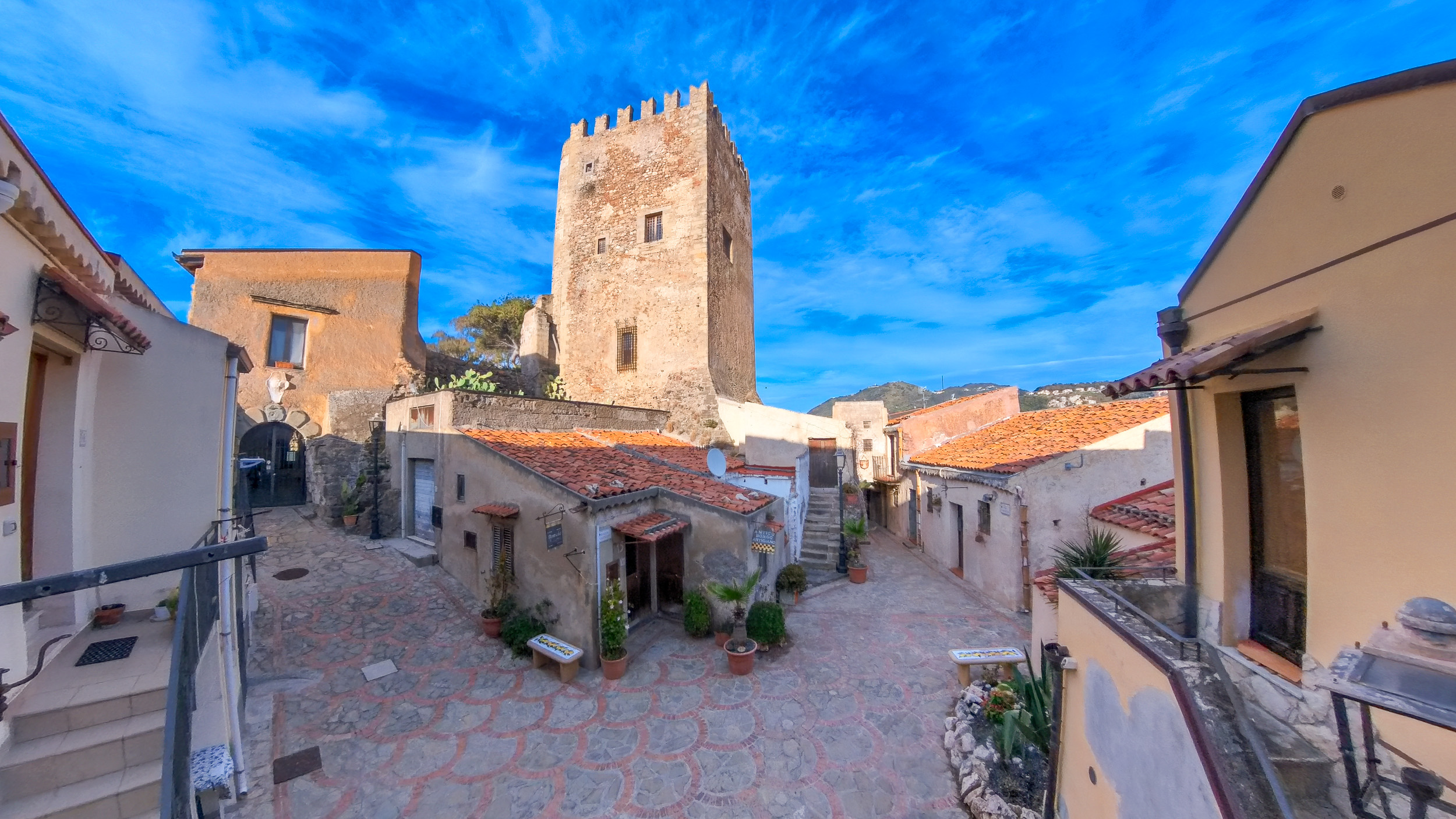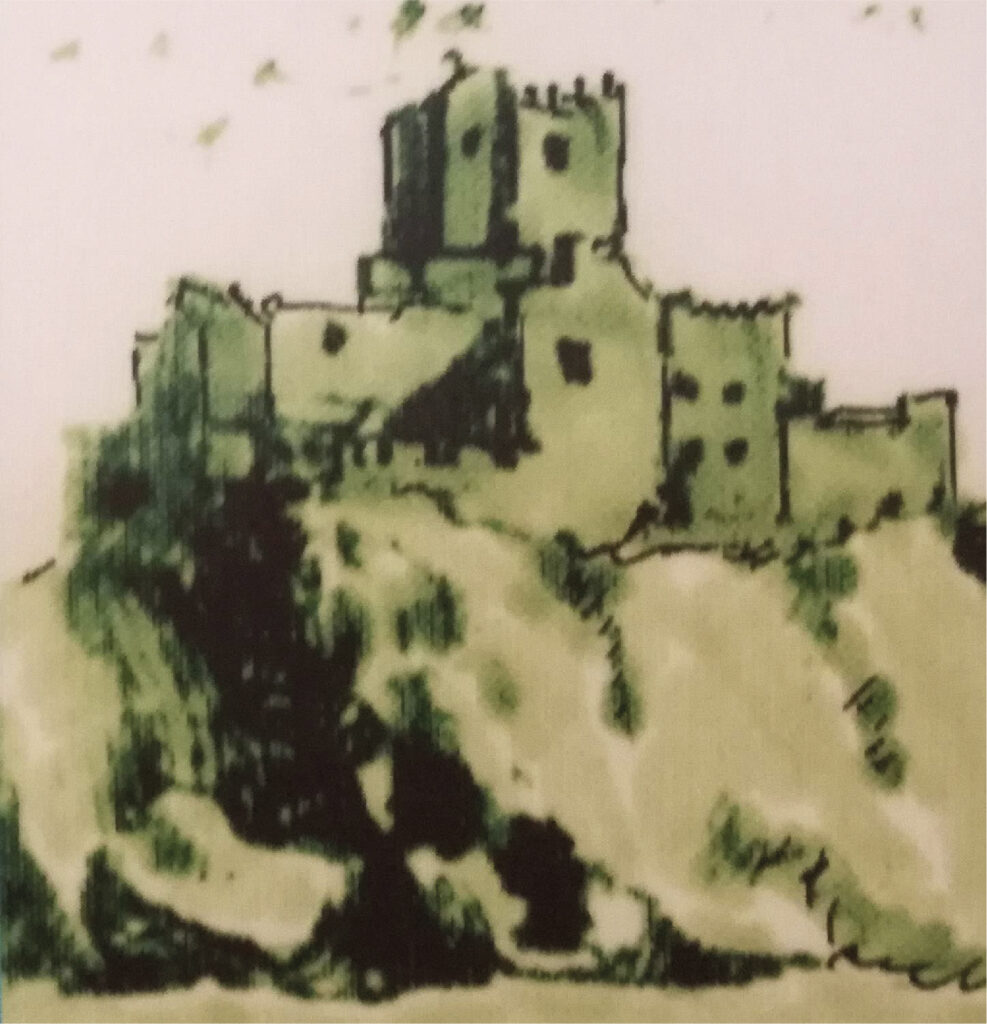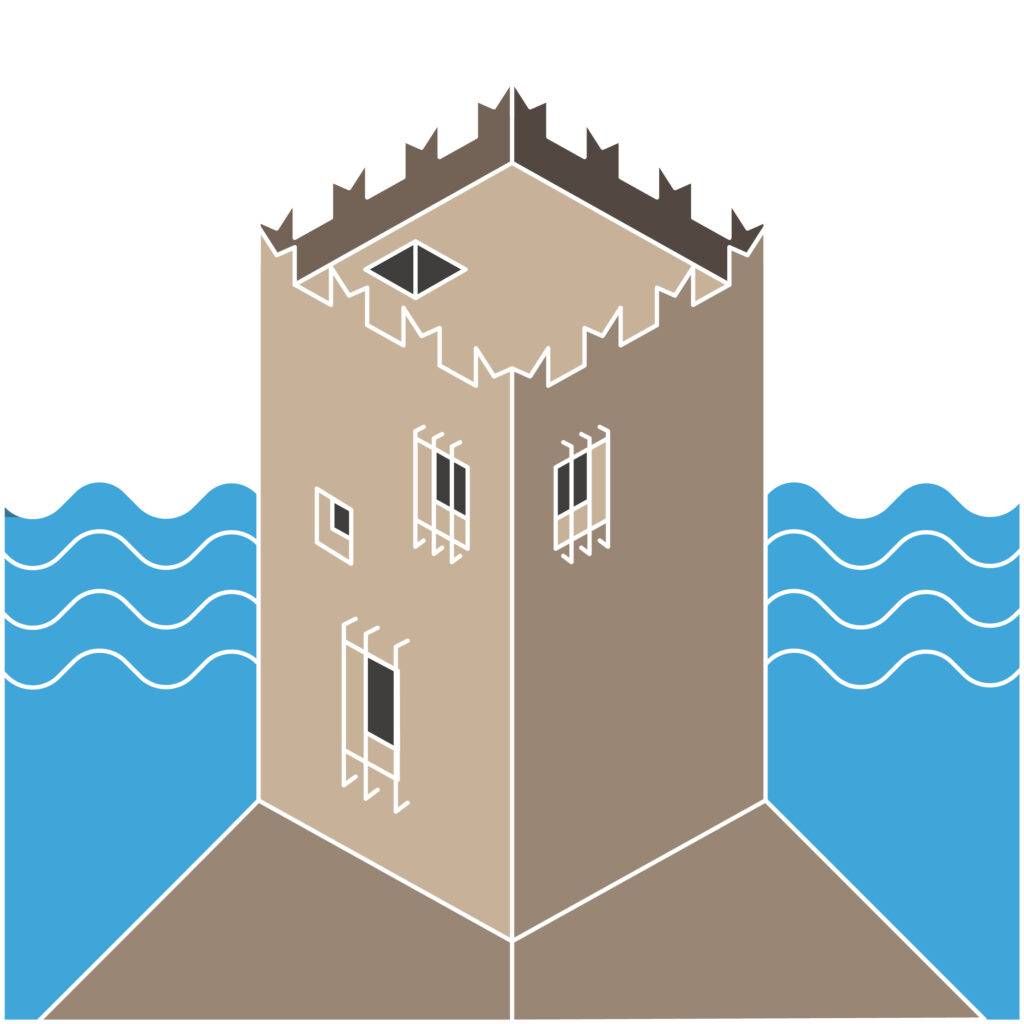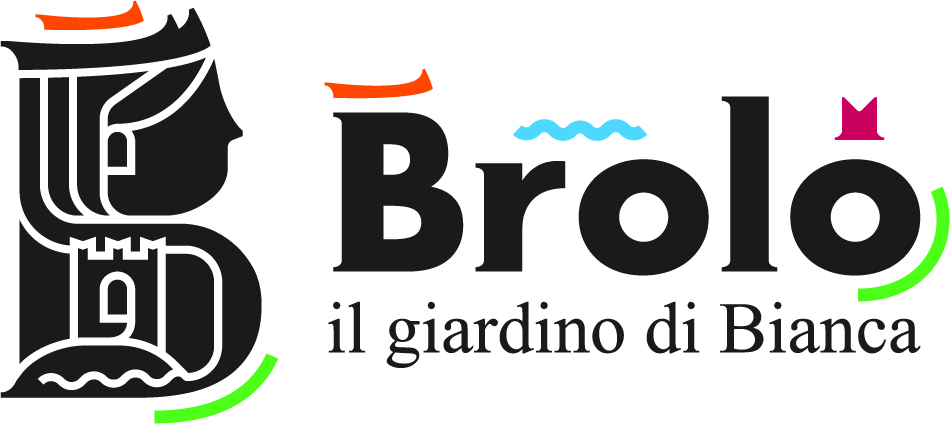Piazza Castello

Una storia di trasformazioni
Il Castello di Brolo ha attraversato i secoli trasformandosi non solo nella sua struttura, ma anche nella sua destinazione d’uso.
Le prime tracce della sua esistenza risalgono a circa mille anni fa, quando ancora si presentava privo di fortificazioni. Nel corso del tempo la struttura è stata consolidata e fortificata. Inizialmente aveva solo due livelli: un piano terra chiuso e inaccessibile dall’esterno, e un livello superiore raggiungibile attraverso delle scale in legno retraibili.
Durante il Quattrocento, il castello assume anche la funzione di residenza. Vengono costruiti l’ultimo livello, la volta costolonata e la scala elicoidale. Oggi resta solo la torre, ma la residenza era ben più grande e composta da più edifici, come il palazzo baronale e la Chiesa di San Girolamo.
Il Castello di Brolo racconta così una storia di evoluzione e adattamento, una testimonianza delle esigenze e dei vari momenti vissuti dal paese nel corso dei secoli.


A Chronicle of Transformation
The Castle of Brolo has traversed the centuries, transforming not only in its structure but also in its use.
The first traces of its existence date back to about a thousand years ago, when it still appeared without fortifications. Over time, the structure was consolidated and fortified. Initially, it had only two levels: a ground floor that was closed and inaccessible from the outside, and an upper level that could be reached via retractable wooden stairs.
During the Fifteenth century, the castle also began to serve as a residence. The top level, the ribbed vault, and the spiral staircase were built. Today only the tower remains, but the residence was much larger and comprised several buildings, such as the baronial palace and the Church of San Girolamo.
The Castle of Brolo thus tells a story of evolution and adaptation, a testament to the needs and various moments experienced by the village over the centuries.
